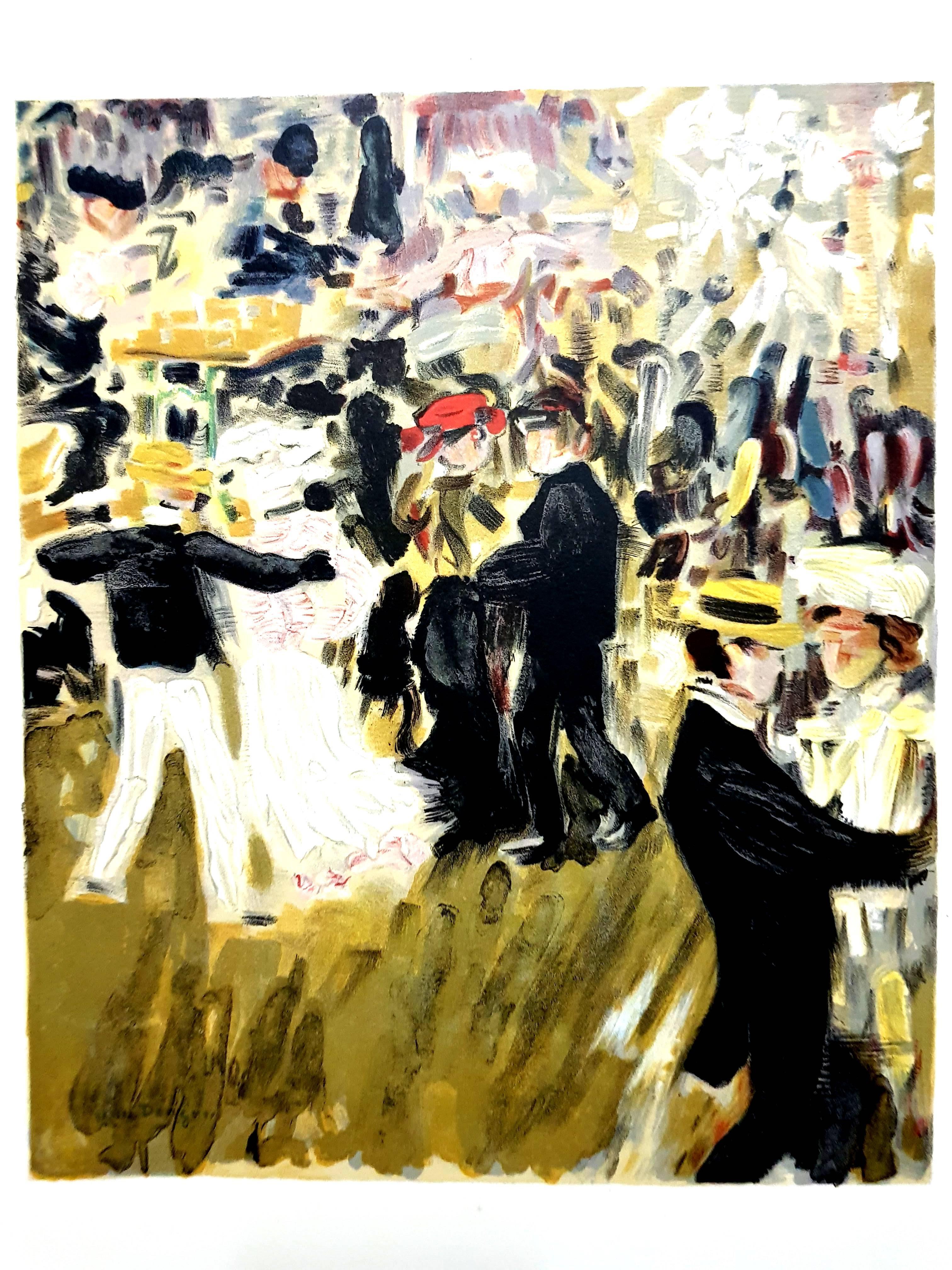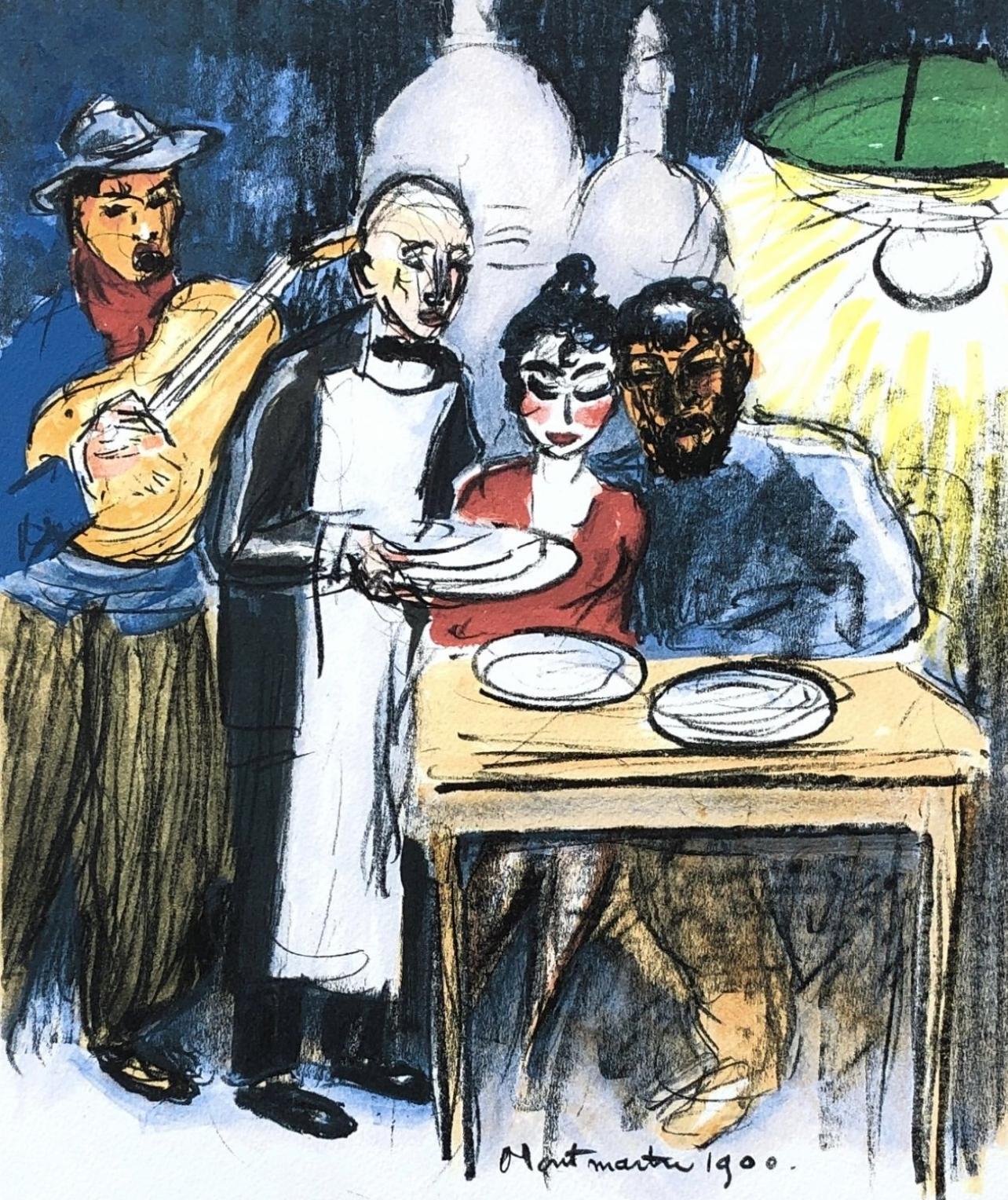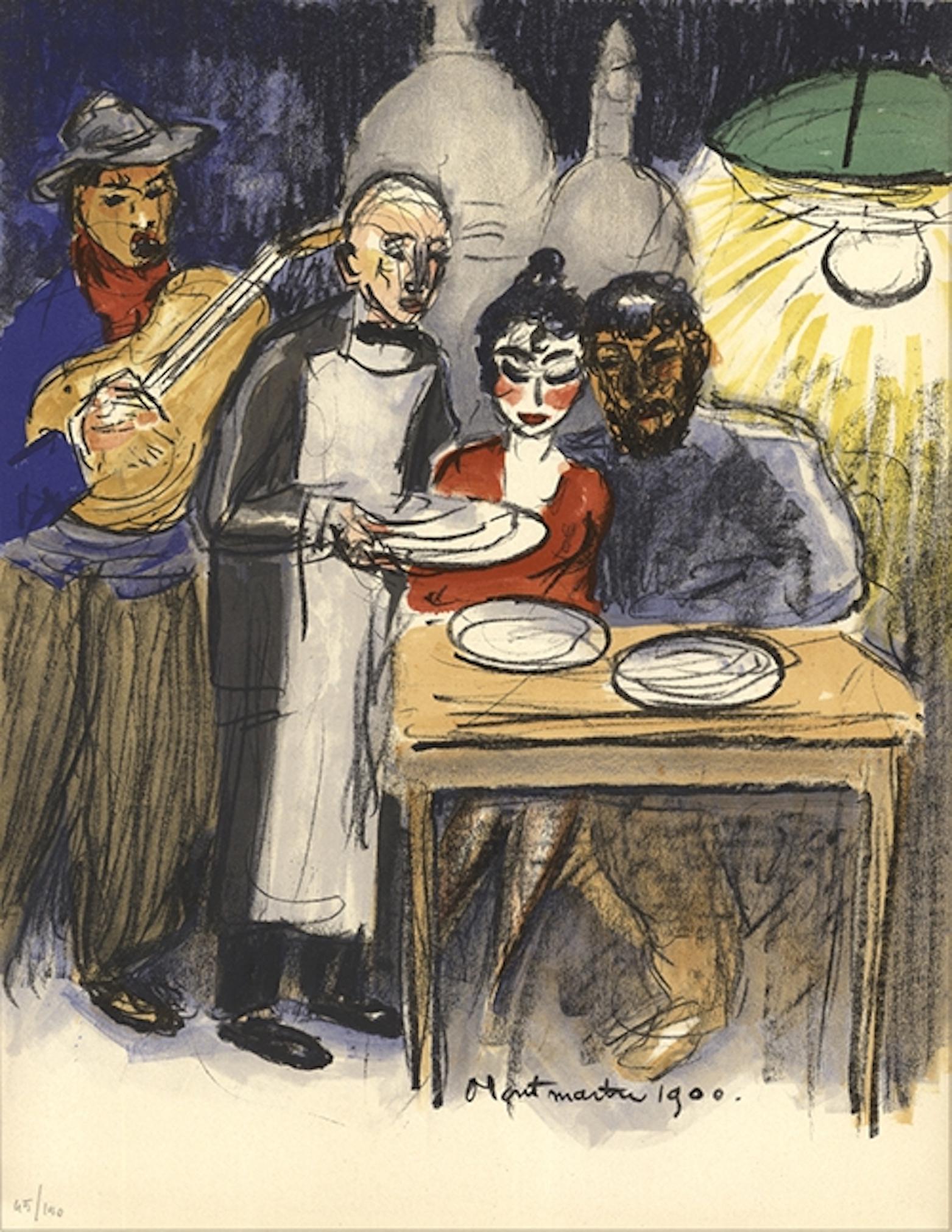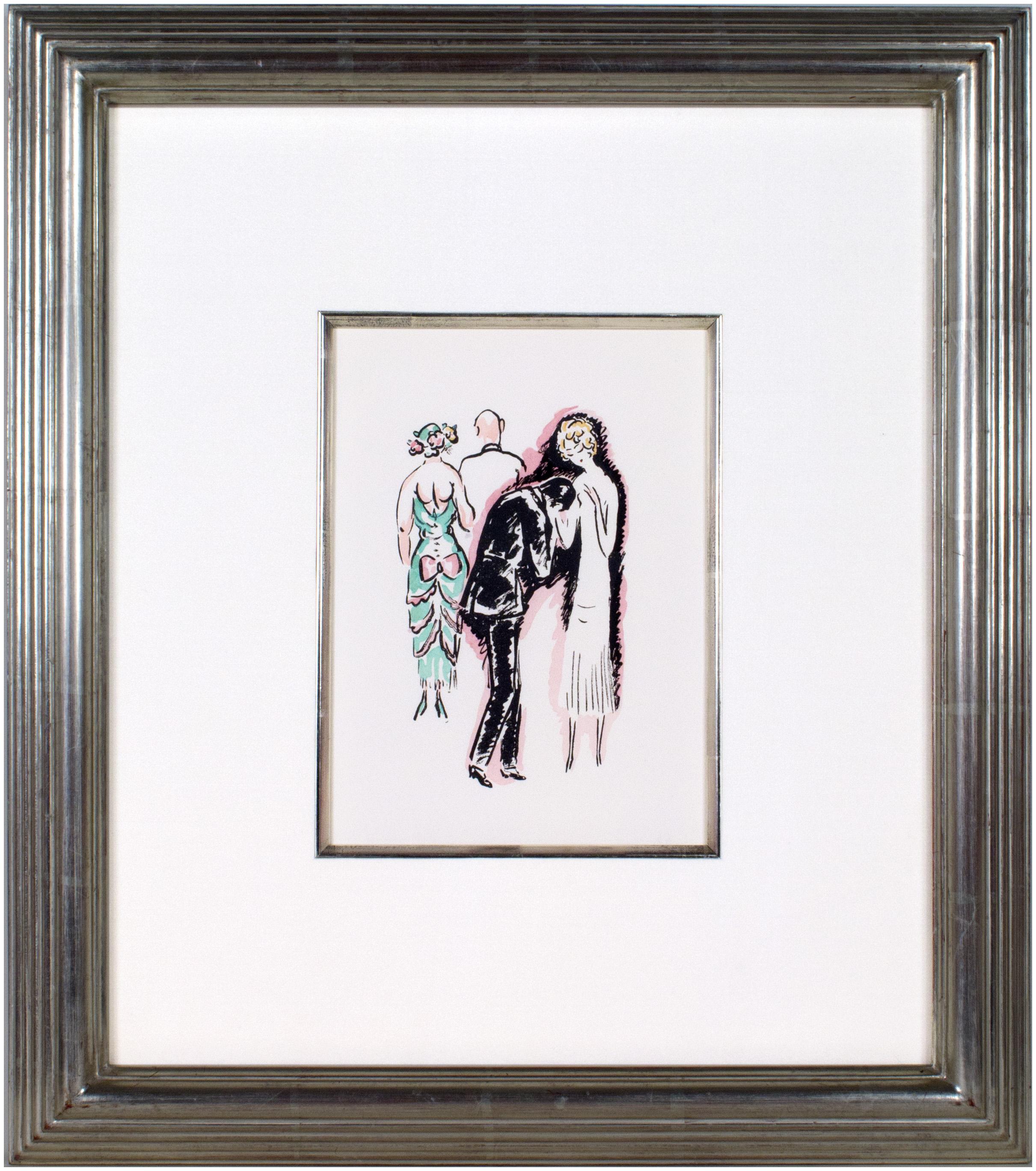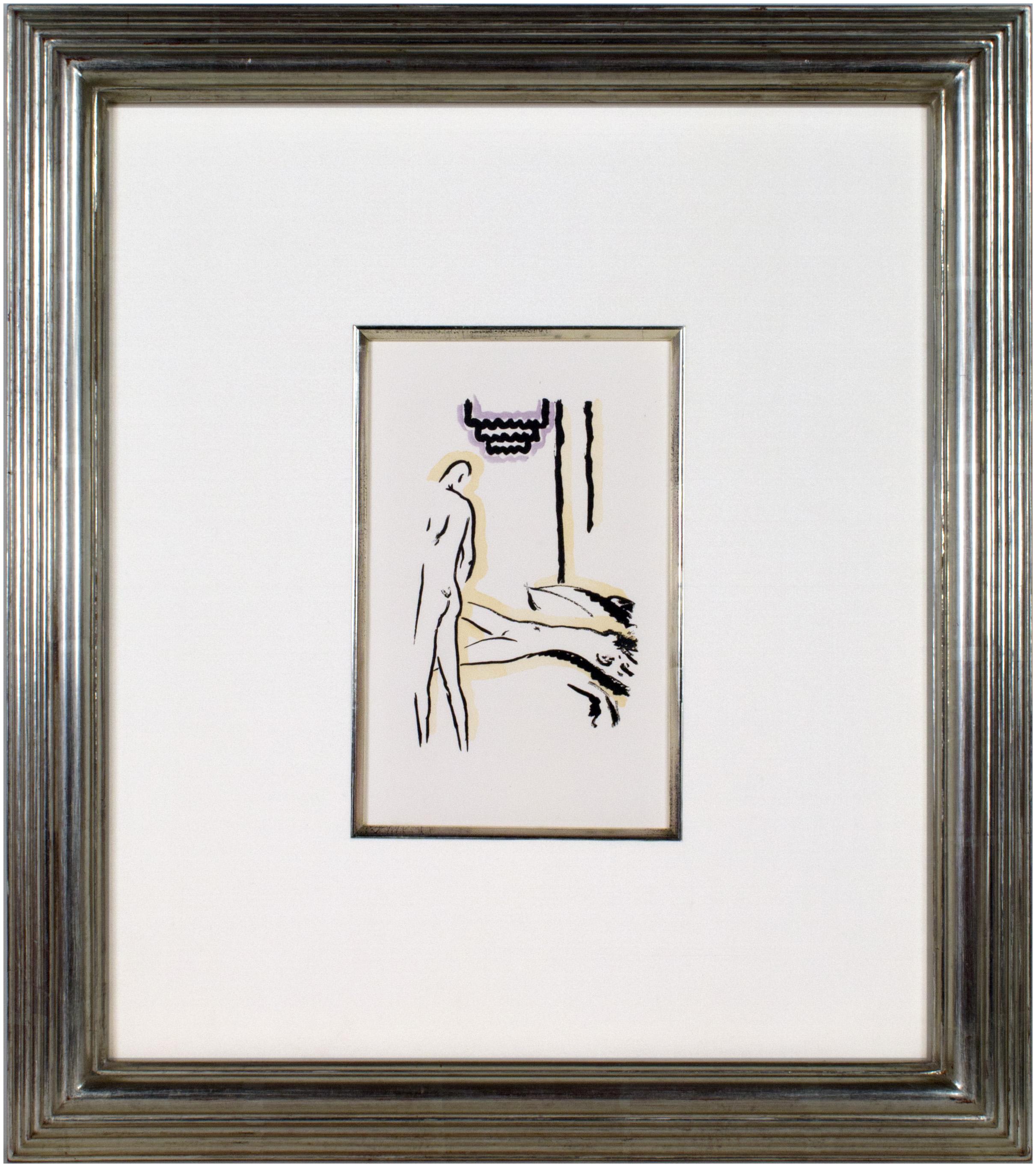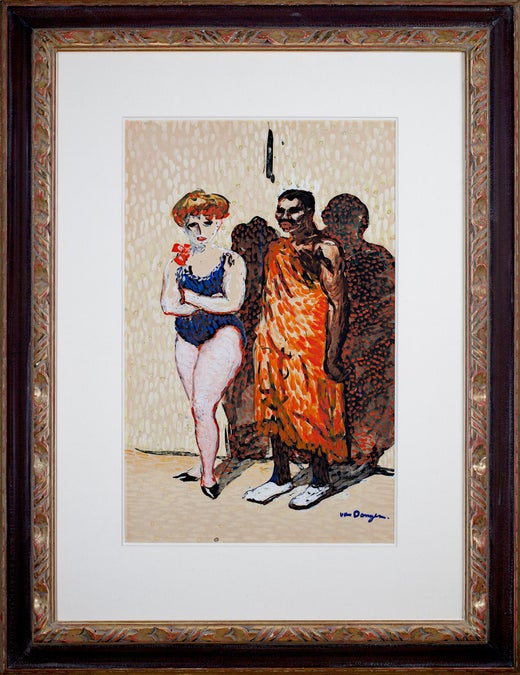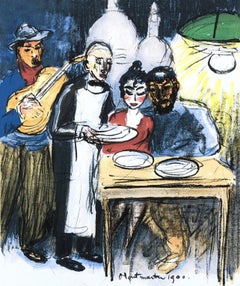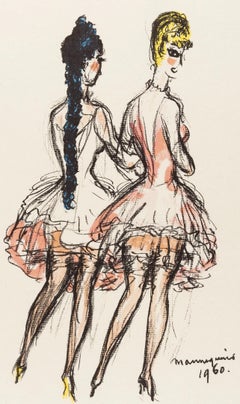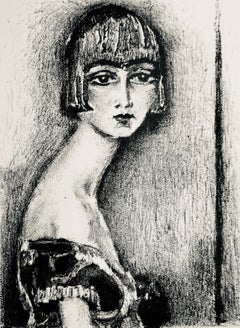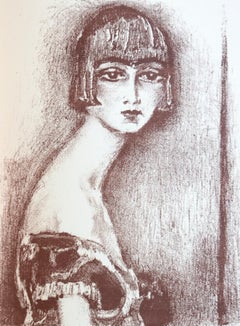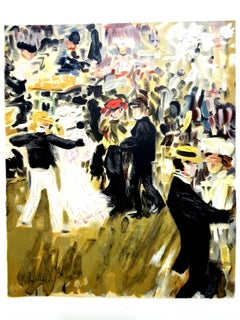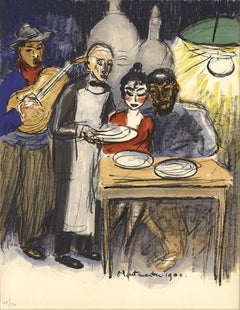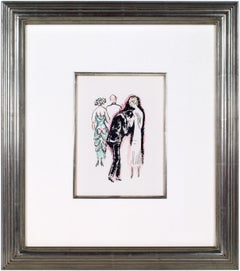This exquisite lithograph by Kees van Dongen (1877–1968), titled Le Bal (The Ball), from the folio Les Peintres mes amis (The Painters My Friends), originates from the 1965 edition published by Editions d'art Les Heures Claires, Paris, and printed by Imprimerie Lucien Detruit, Paris, May 20, 1965. Le Bal (The Ball) captures van Dongen’s trademark elegance, sensuality, and rhythm, portraying the glamour and vitality of modern Parisian life through bold line, vivid tonal contrast, and expressive composition. The work embodies his mastery of color and form—qualities that made him one of the defining figures of Fauvism and modern portraiture.
Executed as a lithograph on grand velin d'Arches paper, this work measures 15 x 11 inches. Signed in the plate and unnumbered as issued. The edition exemplifies the exceptional standards of Editions d'art Les Heures Claires, Paris, and the master craftsmanship of Imprimerie Lucien Detruit, Paris.
Artwork Details:
Artist: Kees van Dongen (1877–1968)
Title: Le Bal (The Ball), from the folio Les Peintres mes amis (The Painters My Friends), 1965
Medium: Lithograph on grand velin d'Arches paper
Dimensions: 15 x 11 inches (38.1 x 27.94 cm)
Inscription: Signed in the plate and unnumbered as issued
Date: 1965
Publisher: Editions d'art Les Heures Claires, Paris
Printer: Imprimerie Lucien Detruit, Paris
Catalogue raisonne reference: Monod, Luc. Manuel de l’amateur de livres illustres modernes, 1875–1975. Ides et Calendes, 1992, illustration 11485.
Condition: Well preserved, consistent with age and medium
Provenance: From the folio Les Peintres mes amis (The Painters My Friends), published by Editions d'art Les Heures Claires, Paris; printed by Imprimerie Lucien Detruit, Paris, May 20, 1965
Notes:
Excerpted from the folio (translated from the folio), The lithographs by Derain and Van Dongen were printed by Lucien Detruit. Those by Dufy, Matisse, Chagall, Dunoyer de Segonzac, Cavailles, Terechkovitch, and Carzou were printed by Mourlot Freres. Those by Picasso and Buffet were printed by P.-J. Ballon. The lithograph by Miro was printed in the workshop Arte, which also printed, in phototype, the frontispiece. The etchings by Villon and Zadkine were printed by Manuel Robbe. That by Braque was printed by A. and P. Crommelynck. The wood engravings and printing of the illustrations by Vlaminck, Rouault, Pascin, and Utrillo were done by Raymond Jacquet. The texts by Andre Warnod, collected by his daughter Jeanine Warnod, were hand-set in De Roos type, size 24, and printed in Paris on the presses of Daragnes. Printing completed on May 20, 1965. Justification of the edition, III examples on large velin d'Arches containing the original copper plates inked for one intaglio illustration; a proof on silk of two lithographs; the four wood-engraved illustrations, mounted; a color separation of one lithograph; and a complete suite of the illustrations on Arches—numbered I to III. XVI examples on large velin d'Arches containing a proof on silk of two lithographs; the four wood-engraved illustrations, mounted; a color separation of one lithograph; and a complete suite of the illustrations on Arches—numbered IV to XIX. XXI examples on large velin d'Arches containing a proof on silk of two lithographs; the four wood-engraved illustrations, mounted; and a complete suite of the illustrations on Arches—numbered XX to XL. XL examples on large velin d'Arches containing a complete suite of the illustrations on Arches—numbered XLI to LXXX. CLXX examples on large velin d'Arches—numbered LXXXI to CCL.
About the Publication:
The folio Les Peintres mes amis (The Painters My Friends), published in Paris in 1965 by Editions d'art Les Heures Claires, stands among the most ambitious postwar French printmaking collaborations. Conceived as a celebration of modern art’s greatest masters, the volume unites original graphic works by Van Dongen, Derain, Terechkovitch, Cavailles, Dunoyer de Segonzac, Dufy, Vlaminck, Matisse, Picasso, Chagall, Braque, Villon, Zadkine, Miro, and others, alongside critical essays by Andre Warnod. Each plate was executed under the supervision of Paris’s foremost ateliers—Mourlot Freres, Lucien Detruit, P.-J. Ballon, Manuel Robbe, and Raymond Jacquet—representing the finest techniques of lithography, etching, and woodcut. This luxurious folio exemplifies the artistry and craftsmanship of mid-20th-century French printing, merging text, image, and handcraft into a unified artistic statement. A triumph of the livre d’artiste tradition, it remains a vital record of the enduring creative dialogue between the painters, printers, and publishers who defined the visual culture of their time.
About the Artist:
Kees van Dongen (1877–1968) was a pioneering Dutch-born French painter, printmaker, and illustrator whose vivid color, daring brushwork, and sensuous portrayals of modern life established him as one of the defining figures of early 20th-century art. Born Cornelis Theodorus Maria van Dongen in Delfshaven, near Rotterdam, he studied at the Royal Academy of Fine Arts before relocating to Paris in 1897, where he immersed himself in the bohemian milieu of Montmartre. There, he exhibited alongside avant-garde contemporaries in the Salon d’Automne and the Salon des Independants, where his use of raw, expressive color aligned him with the Fauvist movement led by Henri Matisse and Andre Derain. Van Dongen quickly distinguished himself within this revolutionary circle for his seductive, emotionally charged portraits of women—actresses, dancers, and high-society figures—that embodied both the vitality and sophistication of modern life. Drawing inspiration from the intensity of Vincent van Gogh, the structural innovations of Paul Cezanne, and the psychological power of Edvard Munch, he developed a unique style that merged expressive colorism with cosmopolitan elegance. Throughout his career, Van Dongen maintained close relationships with many of the most important artists of his time, including Pablo Picasso, Alexander Calder, Alberto Giacometti, Salvador Dali, Joan Miro, Wassily Kandinsky, Marcel Duchamp, and Man Ray—each of whom, in their own way, redefined the boundaries of modern art alongside him. His Fauvist paintings shocked audiences with their vibrant hues, emotional intensity, and unapologetic sensuality. His bold compositions, dominated by electric reds, cobalt blues, and viridian greens, captured the glamour and volatility of the modern woman—both muse and icon of a changing world. His female subjects, with their elongated limbs, almond-shaped eyes, and vibrant attire, embodied sensuality and independence, challenging conventional notions of femininity. As his fame grew, he became the portraitist of choice for Paris’s elite, capturing the sophistication and allure of the interwar years through portraits of aristocrats, socialites, and cultural icons. Van Dongen’s style evolved beyond Fauvism, incorporating elements of Cubism and Art Deco while retaining his expressive mastery of color and line. His technical skill extended to printmaking and illustration, collaborating with ateliers such as Mourlot Freres and contributing satirical works to publications like Le Rire and Gil Blas Illustre, where his wit and keen eye for modern life flourished. His later works, characterized by harmonious tonal contrasts and elegant simplicity, embodied both sensuality and restraint, blending passion with sophistication. His influence resonated across generations, inspiring artists like David Hockney, Alex Katz, and Peter Doig, as well as fashion designers Yves Saint Laurent and Christian Dior, who admired his celebration of modern femininity. Van Dongen’s art, housed in major institutions including the Centre Pompidou, Musee d’Orsay, Tate Modern, Museum of Modern Art in New York, and Stedelijk Museum in Amsterdam, remains synonymous with the sensual vibrancy of modernism. Standing alongside Pablo Picasso, Alexander Calder, Alberto Giacometti, Salvador Dali, Joan Miro, Wassily Kandinsky, Marcel Duchamp, and Man Ray, he occupies a singular position as a master of expressive color and psychological allure. The highest auction record for Kees van Dongen was achieved by Jeune Arabe (Young Arab), which sold for $13,802,500 USD at Christie’s, New York, on November 8, 2010, affirming his enduring influence and stature as one of the most collectible and iconic painters of the modern era.
Kees van Dongen Le Bal (The Ball), Van Dongen Les Peintres mes amis (The Painters My Friends), Van Dongen Les Heures Claires, Van Dongen Imprimerie Lucien Detruit, Van Dongen grand velin d'Arches, Van Dongen collectible print.
